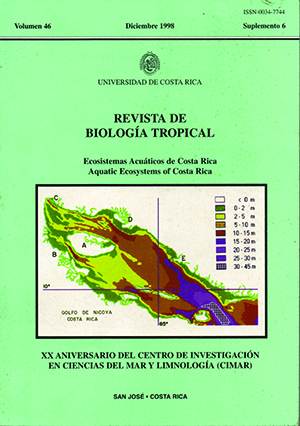Abstract
Sediments and the marine current system at the Gandoca-Manzanilio National Wildlife Refuge. Caribbean coast of Costa Rica, define two sedimentary environments. One between Punta Uva and Manzanillo. where sediments were derived from the coral reefs and local geological fonnations. The Other lies between Punta Mona and Rio Sixaola. where sediments arrive primarily from outside tile an:a. fine-grained sediments were collected off rivers and creeks mouths. and adjacent beaches. The highest percentage of carbonates (60 to 80 %) was found off Punta Uva, and consisted mainly of mollusk, algal and coral fragments, and Foraminifera. Magnetite found in large quantities off Manzanillo, and also observed on the beach. was derived locally from the Rio Banano Formation. Clay and silt were found in high concentrations from Punta Mona to Rio Sixaola. Other minerals. pyroxene and hyrobiotile, probably originated from the erosion of intrusive rock s cropping out in the central section of the Talamanea Range. The sediment plume of Rio Sixaola extends several kilometers off shore, flowing northwest and affecting coral reefs off Punta Mona. Other an:as of the Refuge an: not exposed to high concentrations of terrigenous sediments. However, as a result of deforestation, new constructions and removal of riparian and coastal forests, more coral reefs of the Refuge will be affected by sediments.##plugins.facebook.comentarios##

This work is licensed under a Creative Commons Attribution 4.0 International License.
Copyright (c) 1998 Revista de Biología Tropical
Downloads
Download data is not yet available.


